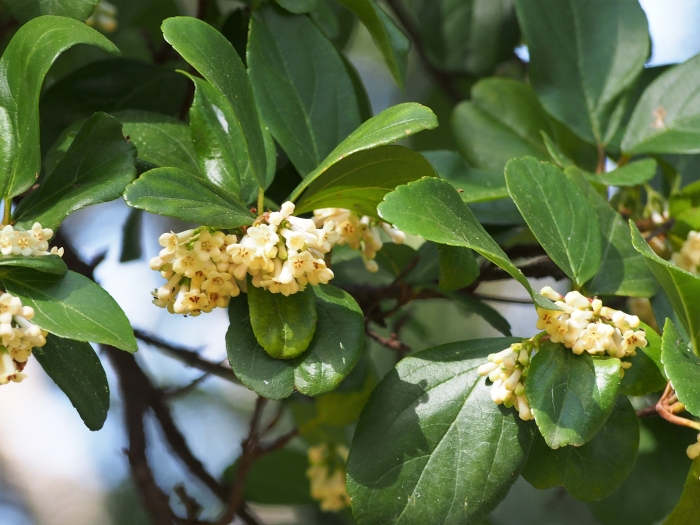Sandankwa Viburnum
(Viburnum suspensum)
Sandankwa Viburnum (Viburnum suspensum)
/
/

Agnieszka Kwiecień, Nova
CC BY-SA 4.0
Image By:
Agnieszka Kwiecień, Nova
Recorded By:
Copyright:
CC BY-SA 4.0
Copyright Notice:
Photo by: Agnieszka Kwiecień, Nova | License Type: CC BY-SA 4.0 | License URL: https://creativecommons.org/licenses/by-sa/4.0 | Uploader: Nova | Publisher: Wikimedia Commons | Title: Viburnum_suspensum_Kalina_2023-02-24_04.jpg | Notes: User created page with UploadWizard |



















Estimated Native Range
Summary
Viburnum suspensum, commonly known as Sandankwa Viburnum, is an evergreen shrub native to the Ryukyu Islands of Japan, where it thrives in subtropical forests. It typically grows up to 12 feet (3.7 meters) in height and spreads equally wide. The shrub has a dense, rounded form with coarse, leathery leaves that are dark green, oval with serrated edges, about 3.5 inches (8.9 cm) long, and 2 inches (5 cm) wide. These leaves are held oppositely on rough-textured, dark brown stems. In the spring, and occasionally in the summer, Sandankwa Viburnum produces clusters of small, tubular flowers at the ends of new branches. The flowers are white to pale pink and not particularly showy, but they are fragrant, adding sensory appeal to the garden. In the fall, the plant bears small red berries that are attractive to birds and other wildlife.
Sandankwa Viburnum is valued for its dense foliage and ability to create a lush backdrop in landscapes. It is often used for hedges, screens, or as a foundation plant in urban and suburban gardens. This shrub is relatively low-maintenance, tolerating a range of soil types, though it prefers well-drained soils. It can grow in full sun to part shade and requires medium amounts of water. While it is generally pest-resistant, it can be susceptible to viburnum leaf beetle and fungal diseases in humid climates. Gardeners should be aware that it can become invasive in some regions outside its native range, so care should be taken to manage its spread.CC BY-SA 4.0
Sandankwa Viburnum is valued for its dense foliage and ability to create a lush backdrop in landscapes. It is often used for hedges, screens, or as a foundation plant in urban and suburban gardens. This shrub is relatively low-maintenance, tolerating a range of soil types, though it prefers well-drained soils. It can grow in full sun to part shade and requires medium amounts of water. While it is generally pest-resistant, it can be susceptible to viburnum leaf beetle and fungal diseases in humid climates. Gardeners should be aware that it can become invasive in some regions outside its native range, so care should be taken to manage its spread.CC BY-SA 4.0
Plant Description
- Plant Type: Shrub
- Height: 6-12 feet
- Width: 6-10 feet
- Growth Rate: Moderate
- Flower Color: White
- Flowering Season: Spring, Winter
- Leaf Retention: Evergreen
Growth Requirements
- Sun: Full Sun, Part Shade
- Water: Medium
- Drainage: Fast, Medium, Slow
Common Uses
Bee Garden, Bird Garden, Border Plant, Butterfly Garden, Deer Resistant, Fire Resistant, Fragrant, Hedges, Hummingbird Garden, Low Maintenance, Rabbit Resistant, Salt Tolerant, Street Planting
Natural Habitat
Subtropical forests of the Ryukyu Islands
Other Names
Common Names: Gomo-Ju
Scientific Names: Viburnum suspensum , Viburnum sandankwa
GBIF Accepted Name: Viburnum suspensum Lindl.